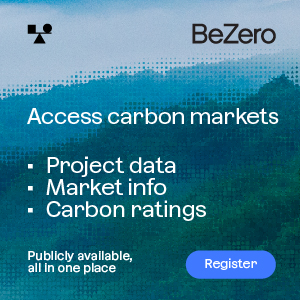The Netherlands would need to buy around 13 million UN carbon credits if it opted to meet a court-imposed target with international units, at a total cost of just over €5 million at today’s prices, calculations by Carbon Pulse show.
The Dutch government is weighing its options after a court ruled on Wednesday that it must deepen its 2020 emission reduction target to -25% under 1990 levels from its current -17% goal.
While environmental groups hope the action will spur citizens to challenge governments throughout the world on their climate ambition, the Netherlands may potentially drag the process out for years through appeals, risking an electorate backlash in the year countries are due to ink a global climate pact.
Alternatively, the government could opt to resume its previous practice and meet part or all of the shortfall with international carbon credits.
This would be a relatively cheap and simple way for it to meet the target given the limited time to implement domestic policies before 2020.
But the move may be questioned by citizens eager to see structural changes to cut the country’s use of fossil fuels rather than merely offsetting with credits from carbon-cutting projects in the developing world.
The deeper goal would require an additional emissions reduction of 17 million tonnes of CO2e in 2020, according to Emil Dimantchev, an analyst at Thomson Reuters Point Carbon.
He noted that the court ruling only concerns emissions in 2020, whereas the Netherlands’ existing 2020 target involves cutting average GHG levels over 2013-2020.
CREDIT SURPLUS
The Netherlands was one of the world’s biggest state buyers of carbon credits, purchasing up to 75 million CERs, ERUs and AAUs to help meet its target under Kyoto’s first commitment period (2008-2012), according to Point Carbon’s Frank Melum.
But it stopped buying in 2012 after determining that it had met its goal, as industrial output slumped after the global economic downturn and led to lower-than-expected emissions.
This left the Netherlands with a surplus of around 4 million units, which can in principle be used for compliance in the second Kyoto commitment period (2013-2020), according to a spokeswoman at the Dutch Emissions Authority (NEa), the government agency responsible for the managing the credits.
Benchmark Dec-15 CER futures were trading down 1 cent at €0.39 on ICE on Thursday.
Based on this price, it would cost the Netherlands just over €5 million to buy enough credits to meet the new court-imposed goal, assuming the government opts to exclusively use CERs.
This potentially new source of CER demand would barely dent the CER market’s oversupply of hundreds of millions of units, but represents over half of remaining annual demand in the EU ETS, where companies have almost exhausted their quotas and are able to buy 17-20 million CERs a year until then, according to analysts.
By Ben Garside – ben@carbon-pulse.com



